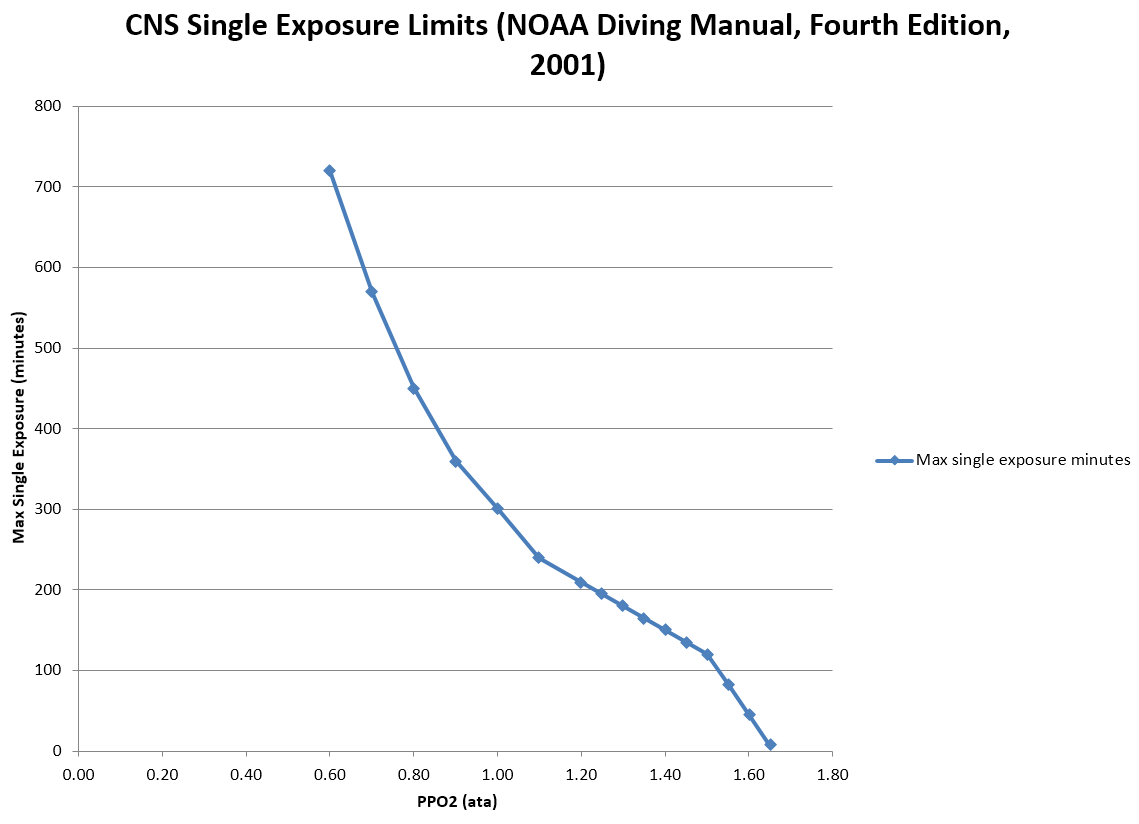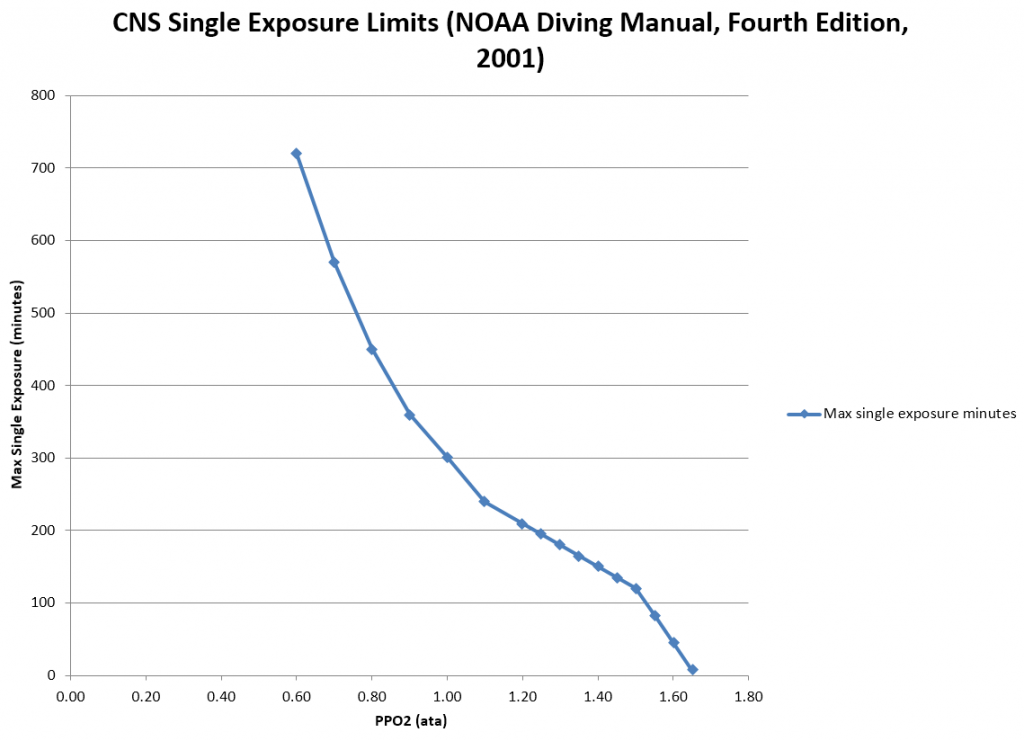The question of what CNS oxygen exposure is safe can spark heated debate among technical divers. This reflects the seriousness of CNS oxygen toxicity when diving. This article sidesteps that debate, and focuses solely on how Shearwater dive computers calculate the CNS value. The CNS display is a tool for managing the risk of oxygen exposure. Understanding this tool is an important step in making informed decisions.
The CNS value (short for Central Nervous System Oxygen Toxicity) is a measure of how long you have been exposed to elevated partial pressures of oxygen (PPO2) as a percentage of a maximum allowable exposure time. As PPO2 goes up, the maximum allowable exposure time goes down. The table we use is from the NOAA Diving Manual (Fourth Edition):

This table can be read as “at a PPO2 of 1.0 ata, the maximum single exposure time is 300 minutes”. So for example, if you breathe a PPO2 of 1.0 for 30 minutes, this will increase your CNS value by 10% (30/300). Since the PPO2 will vary during a dive, this exposure is continuously calculated and added up. So if you then spent just 15 minutes at a PPO2 of 1.60 ata (45 minute maximum exposure limit), your CNS would increase by 33% (15/45) to a total of 43%.
During a dive the CNS never decreases. When back at the surface, a half-life of elimination of 90 minutes is used. So for example, if at the end of the dive the CNS was 80%, then 90 minutes later it will be 40%. In 90 more minutes it will be 20%, etc. Typically after about 6 half-life times (9 hours), everything is back close to equilibrium (0%).
Since the NOAA manual only gives CNS time limits at a few PPO2 values, between these points we linearly interpolate the time limits. Also, the table only goes up to a PPO2 of 1.60, so above this we extrapolate the rates. I have attached a graph showing these values. Note the data point for a PPO2 of 1.65 is not given in the NOAA manual, but instead has been extrapolated out.
You can see that even small increases of PPO2 above 1.6 cause the allowable exposure time to decrease dramatically. Above a PPO2 of 1.65 ata, the CNS rate increases at a fixed rate of 1% every 4 seconds! This is fast, but is derived from the widely used NOAA values.
Hopefully this has given you a clearer understanding of how Shearwater dive computers calculate CNS. This method is not the only way to manage oxygen exposure, nor does it guarantee safety. As divers exposing ourselves to serious hazards, we owe it to ourselves to stay educated so that we may make informed decisions. Future blog posts will discuss past and current research on oxygen toxicity, possible risk factors, and alternative tracking methods. For now, here are some links to more information:
http://en.wikipedia.org/wiki/Oxygen_toxicity
https://dan.org/alert-diver/article/understanding-oxygen-toxicity/
References
United States. National Oceanic and Atmospheric Administration. NOAA Diving Manual, Fourth Edition. Ed. James T. Joiner. Flagstaff: Best Publishing Company, 2001. Print.
---

Written by Tyler Coen
I am the Engineering Manager at Shearwater. With a background in electrical engineering, I work with a committed team to keep Shearwater products reliable and easy to use.





